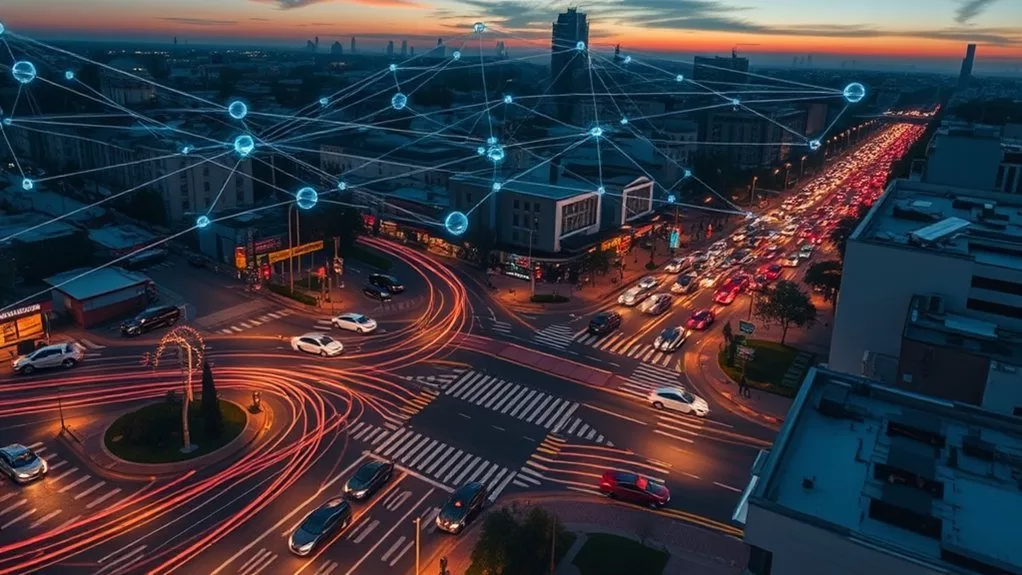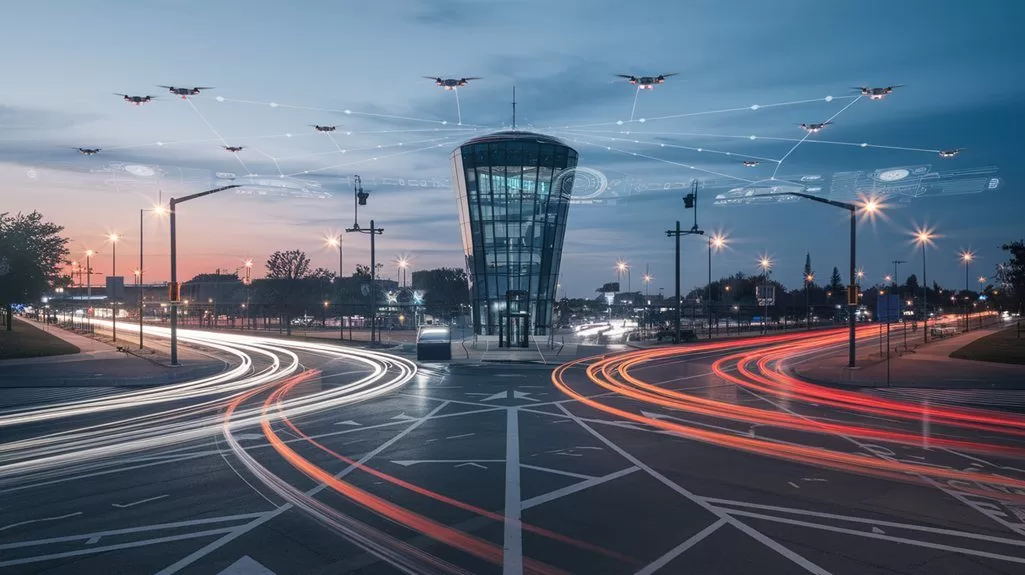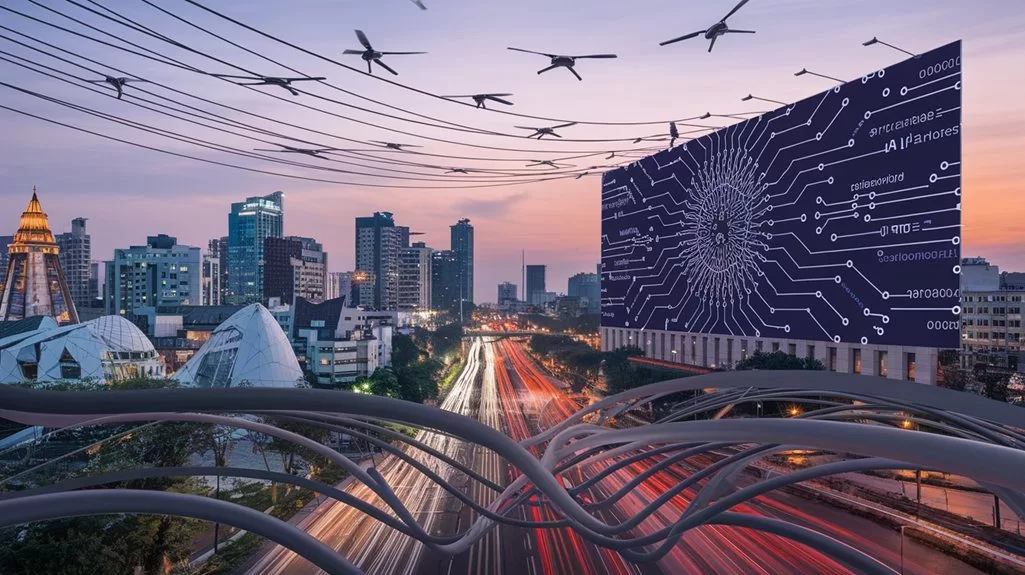AI is reshaping traffic control with real-time signal tweaks cutting congestion by up to 30% and trimming travel times by 40%. Accidents decrease as a happier side effect. Sounds great, except for potential data privacy breaches in a camera-driven world. And let's not forget the hefty price tag on infrastructure upgrades. Some say a small price for cleaner air and safer commutes. Dig deeper to uncover the full story behind these seemingly magic traffic solutions.
Key Takeaways
- AI reduces traffic congestion by 20-30% through real-time data analysis and dynamic signal adjustments.
- Privacy concerns arise due to constant data collection for AI-driven traffic management systems.
- AI enhances traffic safety by detecting accidents and predicting potential collisions using computer vision technology.
- Significant infrastructure investment is needed to implement AI systems in traffic management.
- Cybersecurity threats pose risks to the complex AI systems managing traffic data.

While most people curse at traffic lights, AI sees an opportunity. AI algorithms are revolutionizing the way traffic congestion is managed. They analyze real-time data to adjust signal timings, aiming to reduce congestion by an impressive 20-30%. Dynamic signal adjustment is not just a fancy term; it's a game-changer. Traffic lights adapt based on traffic volume and even make way for emergency vehicles.
Smart routing isn't just for tech lovers; AI uses GPS and road sensor data to reroute vehicles, cutting down your dreaded wait times. Predictive analytics, using historical data, forecast traffic woes before they even happen. It's like magic, but real.
AI-driven smart routing reroutes vehicles, reducing wait times and predicting traffic issues before they occur.
But wait, there's more. AI's role in traffic safety is pivotal. Real-time monitoring keeps an eye on safety concerns. With computer vision, accidents are detected, and emergency services are alerted before you can say, "Oops." Risky behavior identification doesn't just sound ominous—it's a lifesaver, predicting potential collisions before they ruin your day.
AI doesn't just stop at detection; it optimizes emergency responses, ensuring help arrives faster than your pizza delivery. By reducing congestion, AI inadvertently enhances public safety. Less traffic means fewer accidents. A win-win. Facial recognition technology can further optimize traffic flow by predicting foot traffic patterns in high-traffic areas, helping to prevent overcrowding and improve urban mobility.
Efficiency improvements, courtesy of AI, see travel times slashed by up to 40%. Emissions take a nosedive as smoother traffic flow reduces idling. Cost efficiency? Check. Existing infrastructure is maximized, meaning fewer construction headaches. AI-Based Traffic Management Systems also offer cost efficiency by maximizing the utility of existing infrastructure, thus reducing the need for new construction. AI systems rely on real-time, predictive insights to enhance traffic flow, ensuring smoother and more efficient management of transportation networks.
AI even plays nice with public transit, synchronizing signals with bus and train schedules. Imagine real-time updates and optimized routes making your commute a breeze. Yes, please.
However, not all that glitters is gold. Data privacy concerns loom large. The idea of constant data collection raises eyebrows. And let's not forget infrastructure investment. AI demands hefty hardware and software spending.
Cybersecurity threats? Oh, they're very real. Complex systems make juicy targets for cyber-attacks. Everyone wants a piece of the AI pie, but ensuring technological parity across socioeconomic groups is easier said than done. Workforce impact is another elephant in the room, with job roles in traffic management potentially redefined.
In the real world, cities are already seeing the benefits of AI in traffic management. But it's not perfect. There's work to be done. As AI continues to weave its magic, the balance between innovation and privacy remains a delicate dance.
Traffic lights may still be cursed at, but thanks to AI, they're also a beacon of potential.
References
- https://akridata.ai/blog/ai-based-traffic-management-system/
- https://www.americancityandcounty.com/artificial-intelligence/avoiding-bumps-in-the-road-when-designing-ai-powered-traffic-management-systems
- https://www.akira.ai/blog/ai-agents-in-real-time-traffic-monitoring
- https://litslink.com/blog/ai-and-transportation
- https://www.irejournals.com/formatedpaper/1705886.pdf









